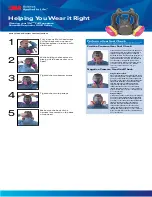
4
CAREvent® ALS - User Manual
1. THE CAREvent® ALS Handheld Automatic
and Manually Triggered Resuscitator
1.1. Introduction
The CAREvent® ALS Handheld Resuscitator provides trained
individuals with a safe and effective means of providing artificial
ventilation during respiratory and/or cardiac arrest.
The CAREvent® ALS Handheld Resuscitator is lightweight,
portable, and extremely durable. Designed for the demands of the
emergency medical and rescue environment, they can be operated
anywhere an oxygen cylinder or piped wall outlet is present.
Note:
An Automatic and Manually Triggered Resuscitator is
considered a critical device, and its components considered
critical components. Only those individuals trained in Cardio-
Pulmonary Resuscitation and the operation of oxygen-powered
ventilators should use this equipment. Thoroughly review this
instruction manual before use.
Note:
This resuscitator is intended for first response to a
breathing emergency only and that patients must be transferred
to a transport and emergency ventilator as equipment becomes
available.
INTENDED USE:
The CAREvent CA resuscitator is intended for use in pulmonary
resuscitation during respiratory and/or cardiac arrest, and to
provide short term ventilatory support for both intra-hospital and
inter-hospital of non-breathing patients.
WARNING
Resuscitator used in contaminated environments can be hazardous
unless entrainment is prevented or appropriate filtration is provided.
WARNING
This resuscitator is not recommended for use on neonates and
pregnant or nursing women.
The material used in this device contains “DEHP”.
PHT
DEHP
































